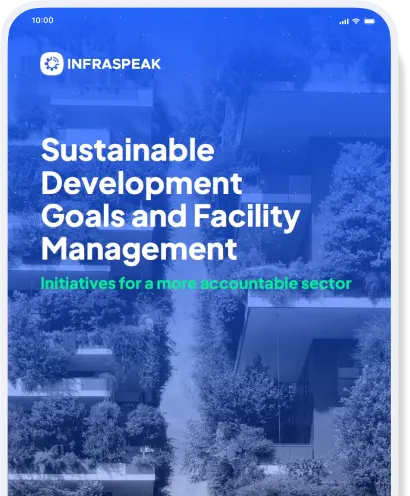What are Building Automation Control Systems (BACS)?
Building Automation Control Systems are centralised, interconnected networks of hardware and software that monitor and control the various systems within a building. The primary goal of BACS is to enhance the efficiency of building operations, reduce energy consumption, and provide a comfortable and safe environment for occupants.
The Energy Performance of Buildings Directive (EPBD) refers to BACS as:
Building Automation and energy consumption monitoring
According to the Clean Energy for All Europeans package, buildings are responsible for 40% of energy consumption and 36% of CO2 emissions in the EU, making them the single largest energy consumer in Europe.
Building automation plays, therefore, a crucial role in contributing to energy efficiency, reducing greenhouse gas emissions, and promoting sustainable building practices, since BACS can:
- help optimising the operation of various building systems, such as heating, ventilation, air conditioning (HVAC), lighting, and more.
- be configured to integrate with renewable energy sources, such as solar panels or wind turbines.
- collect and analyse data over time, providing insights into energy usage patterns and opportunities for optimisation.
- contribute to meeting the criteria for green building certifications like Leadership in Energy and Environmental Design (LEED).
- help buildings respond dynamically to temperature fluctuations and other climate-related factors, ensuring efficient operation and minimising energy waste.
What is the difference between BACS and Building Management Systems (BMS)?
Building Automation Control Systems and Building Management Systems share the common goal of enhancing the operational efficiency and sustainability of buildings, but they may carry nuanced differences depending on regional practices or specific industry contexts.
BACS, as we’ve seen, typically emphasise the automated control and optimisation of various building systems. They often highlight the seamless integration of different control systems to ensure coordinated and efficient building operation.
On the other hand, the term Building Management Systems (BMS) tends to have a broader connotation. While encompassing the features of BACS, BMS may extend beyond the realm of automation. It can include strategic and high-level management functions, such as space utilisation tracking, occupancy monitoring, and other aspects that contribute to overall building management.
BACS decree and tertiary buildings
Published in July 2020, the BACS decree completes the tertiary sector decree and mandates the installation of an automation and control system in non-residential tertiary buildings, with effect from January 1st 2025.
Since energy management is one of the most important levers for reducing energy consumption, the primary objective with the BACS decree is to monitor energy consumption and regulate building activities accordingly. As a reminder, the tertiary sector decree had already required all players in the tertiary sector, owners and tenants of buildings of 1,000 m² or more, to reduce their energy consumption by 40% by 2030 as a first step.
Applicable to both new and existing structures, the BACS decree covers all non-residential tertiary buildings, such as hotels, office buildings, towers, and warehouses, equipped with a heating or air conditioning system, whether or not combined with a ventilation system, boasting a nominal power greater than 290 kW. In the case of tertiary buildings with heating and cooling systems of more than 70 kW, these will have to comply starting January 2027.
The BACS decree will require the following:
- Installation of a building automation and control system, meeting at least class C standards per EN-ISO 52120-1/2022.
- Adoption of a room-by-room control system.
- Maintenance oversight through a dedicated contract conducted by a certified technician.
- Documentation and retention of monthly data for a period of five years.

How a collaborative facilities management software can help
The BACS decree poses, without a doubt, a significant step toward enhancing energy efficiency and sustainability in buildings across Europe. This regulation mandates the implementation of advanced building automation systems in large non-residential buildings, aligning with the EU’s goals for carbon neutrality and energy conservation.
Collaborative platforms like Infraspeak are well-suited to help facilities managers meet the requirements of the BACS decree by offering tools that streamline compliance and improve operational efficiency:
Integration of IoT and automation
Infraspeak can centralise data from IoT sensors, automation systems, and energy meters, providing a unified view of building performance. This aligns with the BACS mandate for interconnected systems.
Real-time monitoring and insights
The platform enables real-time monitoring of critical systems, generating alerts and actionable insights to ensure energy usage stays within regulatory limits.
Collaboration across stakeholders
Infraspeak connects facilities managers, contractors, and building users, enabling seamless communication and task management, which is crucial for the coordinated implementation of energy-saving measures.
Compliance management
With robust reporting and analytics, Infraspeak simplifies the tracking of compliance metrics, ensuring facilities meet the decree’s requirements while identifying opportunities for further improvements.
Scalable and adaptable
As the decree’s standards evolve, software like Infraspeak can adapt, integrating new functionalities and ensuring long-term compliance for diverse building portfolios.
🔥Extra: considerations for facilities managers
- Early adoption: Proactively implementing collaborative platforms can help facilities managers stay ahead of the curve and reduce the risks of non-compliance.
- Stakeholder engagement: Collaborative tools ensure all parties — engineers, contractors, and tenants — are aligned with energy-saving goals.
- Focus on ROI: Automation and smart software can deliver measurable ROI through reduced energy bills, lower maintenance costs, and optimised building performance.


